Havelsan Barkan robotic complex from Turkey
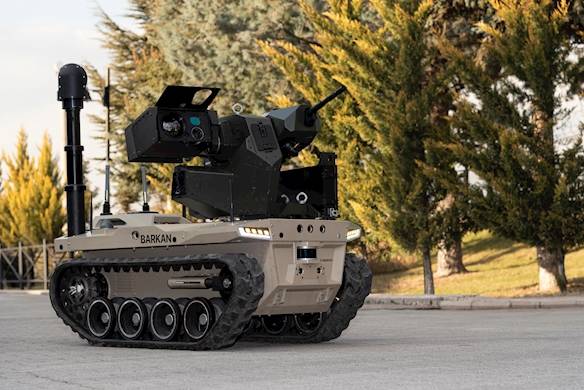
Robot Barkan 1 with a machine gun combat module
Turkish company Havelsan Inc. has developed and is testing the promising ground robotic complex Barkan. The goal of this project is to create remotely controlled or autonomous medium-sized tracked platforms capable of carrying various loads - weapons or other devices. For more efficient operation, the RTK receives an automated control system with elements of artificial intelligence.
Promising robots
The state-owned defense company Havelsan has long been involved in the topic of unmanned and unmanned vehicles. To date, it has shown a number of interesting developments - UAVs of several types, ground-based RTKs, etc. Of greatest interest in this case is the promising information and control system for unmanned systems Superintelligence System based on artificial intelligence.
One of Havelsan's latest developments in the field of robotics is the Barkan UGV ground complex. The first version of this product was created at the turn of the decade and was first shown at exhibitions in 2021. Subsequently, the new robot again took part in such events, and new configurations were demonstrated. It was proposed to install remote-controlled combat modules with machine guns, missiles, etc. on the autonomous platform.
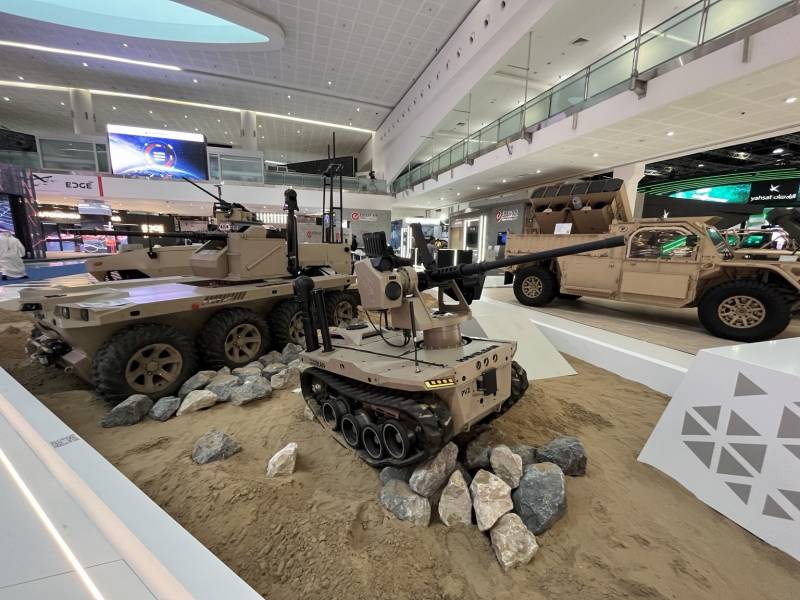
"Barkan" with a heavy machine gun
To date, the original design has undergone some modification, as a result of which the Barkan 2 RTK appeared. It differs from the basic product in its larger dimensions, a different chassis, and increased load capacity. It is capable of carrying a wider range of combat modules or other equipment.
According to the development company, by the time of the first demonstration, the RTK had already passed sea trials and demonstrated the ability to move according to operator commands or in autonomous mode. A complex with a machine gun was also tested. Apparently, work was also being done within the framework of a “superintelligent” control system.
This year, Havelsan twice reported successful tests of a new missile-armed RTK. Thus, in early January, Barkan 2 with a corresponding launcher sent the Roketsan Mete light guided missile into flight for the first time. The second robot carried reconnaissance equipment and was responsible for illuminating the target with a laser rangefinder-target designator. The missile successfully hit the intended target.
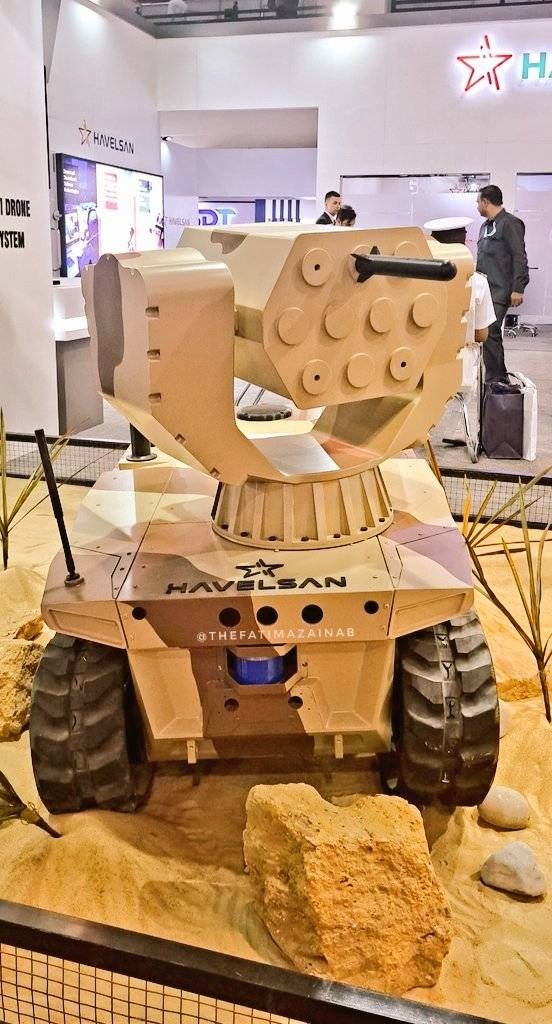
Robot carrier of light rockets Roketsan Mete
In October, similar tests took place using a different weapons. This time, the combat "Barkan" launched loitering ammunition of an unnamed model, created at Havelsan. The kamikaze drone successfully took off and entered the target area, after which it detected and hit a ground target.
It is reported that this year the manufacturing company began deliveries of the Barkan RTK to the Turkish ground forces. Apparently, we are talking about a limited amount of equipment for conducting our own tests and trial operation. Based on the results of these events, the promising robot will be able to officially enter service.
Basic platforms
The main objective of the Barkan project was to create a multi-purpose tracked platform capable of operating independently or at the command of an operator, as well as carrying and using various equipment or weapons. At the same time, integration into promising control loops based on artificial intelligence was envisaged, which could increase the efficiency of independent or group use of technology.
Both Barkan products are designed as a chassis with a compact body and a tracked undercarriage. The roof of the hull is made horizontal and has a seat for the payload. “Barkans” differ in size and weight. Thus, the first version of the RTK had a length of 1,4 m with a width of 0,9 m and a height of 1,1 m; the unladen curb weight was 500 kg. The new Barkan-2 weighs approx. 900 kg and has a length of 1,8 m, a width of 1,25 m and a height of 1,1 m.
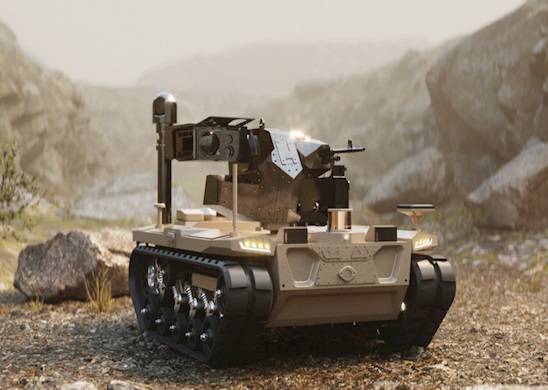
RTK Barkan 2 with a machine gun
The complexes are equipped with an all-electric power plant. Inside the case there are high-capacity batteries and traction motors. Apparently, direct drive of the drive wheels is provided, which improves driving and maneuvering characteristics. The maximum speed of the smaller RTK on a flat surface exceeds 12 km/h, the larger one – at least 15 km/h. The battery charge lasts for 8 and 5 hours of operation, respectively.
Two Robot have a unified set of sensors and controls. It includes video cameras and lidars for terrain mapping and driving. Satellite navigation is also provided. A separate column with an optical-electronic station for general overview is provided.
There is an autopilot that can follow a given route, follow the leading car, and also analyze the road, detect, evaluate and overcome or avoid obstacles. It is possible to move in autonomous mode or under the control of an operator via a two-way radio channel. Onboard facilities also provide control of the payload, regardless of its type.
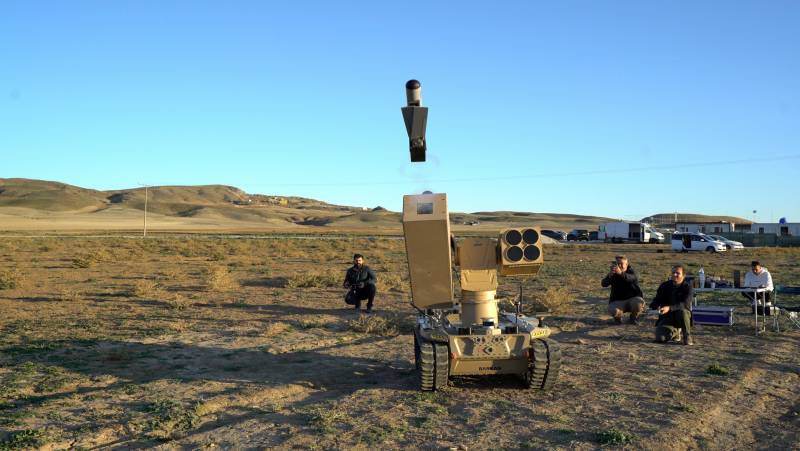
Experienced "Barkan-2" launches loitering ammunition
It is alleged that Barkan products can operate in the circuits of the Superintelligence System information and control system. Ground-based RTKs can exchange data with each other and with other unmanned aerial vehicles. The possibility of creating a “swarm” that distributes tasks between individual machines has been declared. In addition, Barkans can interact with UAVs when performing reconnaissance and combat missions. For example, an aircraft can conduct reconnaissance and highlight a target, and a ground robot can carry out an attack.
Equipment carrier
Barkan products of two versions were created as a carrier of special equipment and/or weapons of different types. Several options for such applications of RTK have already been brought to testing, while others are still present only in promotional materials.
Using standard equipment, incl. OLS on a column, the robot can conduct reconnaissance, detect targets and provide target designation for fire weapons. It is possible to install additional tools for a similar purpose. Using all standard means, Barkan can make maps of the area. Also, without any modification, the remote-controlled platform can be a kind of truck. In this configuration, it can transport cargo or evacuate the wounded.
Both robots can carry DBMS with normal-caliber machine guns. The larger Barkan 2 is also suitable for mounting a 40mm automatic grenade launcher. The possibility of installing launchers for missiles or UAVs corresponding to the platform’s carrying capacity is shown.
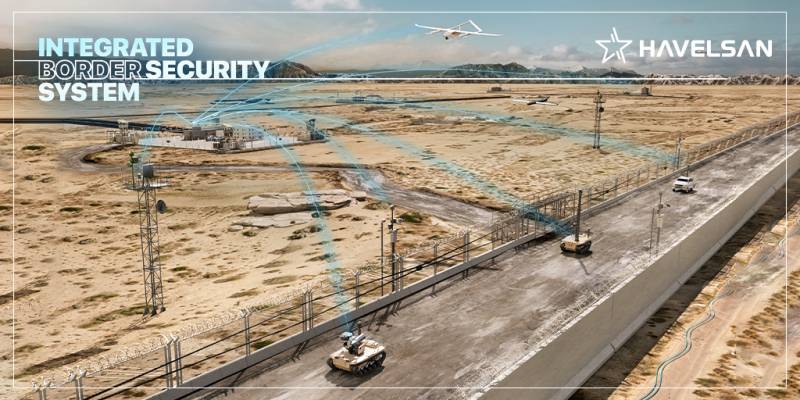
Demonstration of the principles of joint use of RTK and UAVs of various types
The RTK can be equipped with a remotely controlled manipulator with high lifting capacity. This version of robots is proposed to be used as a light engineering vehicle for clearing rubble, defusing explosive devices, etc.
It is assumed that in any configuration and when solving all planned tasks, the Barkan RTK will be able to use network-centric capabilities and artificial intelligence in one way or another. At the same time, such technologies, for obvious reasons, should demonstrate the greatest effectiveness during combat work using various weapons.
Future technologies
The Turkish Armed Forces are showing great interest in various promising technologies. In particular, much attention is paid to the development of unmanned and unmanned systems of various classes - and the national defense industry is actively working in this direction. Developments of different classes with various capabilities are regularly demonstrated.
It is curious that Turkish industry not only develops new types of equipment, but also creates the necessary technologies for the further development of the industry. Thus, intelligent control systems of the type developed by Havelsan may have a great future. The only question is how soon promising developments, including the new Barkan RTK or the Superintelligence System, will reach full use in the armed forces and be used to solve real problems.
Information